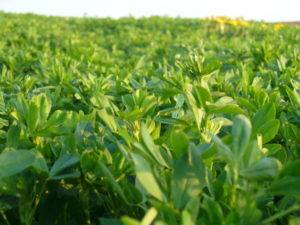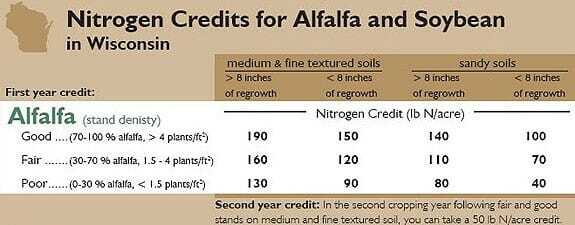
The growth in the cover crop markets combined with production shortages have grass seed prices climbing significantly. As a result, it’s not as economical to plant a grass seed-alfalfa mix. If you’ve historically planted a grass seed-alfalfa mix, consider a solid-seeded alfalfa for spring 2022.
High fertilizer prices have many farmers looking at every nitrogen credit. Similar to soybeans, alfalfa fixes most of its own nitrogen. Latham Seeds’ signature seed treatment, AlfaShieldTM, contains key micronutrients like molybdenum and an LCO growth promoter called Optimize® Gold. Having these components readily available upon emergence increases the chance of early nodulation and nitrogen-fixing cycle.
The speed at which an alfalfa plant creates nutrients correlates to yield, as well a healthier long-term stand. Alfalfa can fix an average of 150 to 200 pounds of nitrogen per year and has a robust advantage in providing nitrogen credits years after the stand ends.
The chart above outlines potential credits. Traditionally, the subsequent crop planted on rotated alfalfa yields about 15 to 20% more! There is more good news, the value of alfalfa extends beyond the nitrogen credit. Alfalfa has many other assets to accompany your operation:
- Next years crop’s roots can grow deeper as alfalfa’s tap root extends beyond the soil hard pan.
- Alfalfa stands are three to four years old and can break down disease cycles.
- Alfalfa interrupts the insect cycles and reduces the use of common herbicide.
- Alfalfa is a great diversification tool and adds an additional avenue of revenue.
- Alfalfa seed can also be amortized over three to four years!
Making alfalfa part of a crop rotation has so many advantages. Talk with your Latham® rep today about making it part of your 2022 crop plan!

